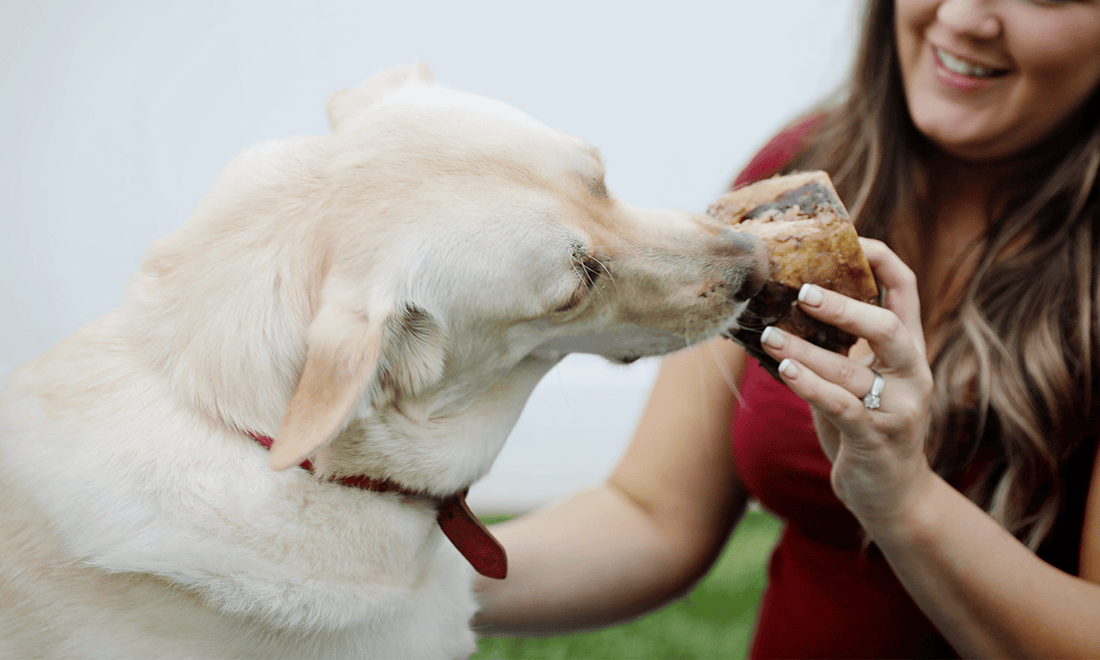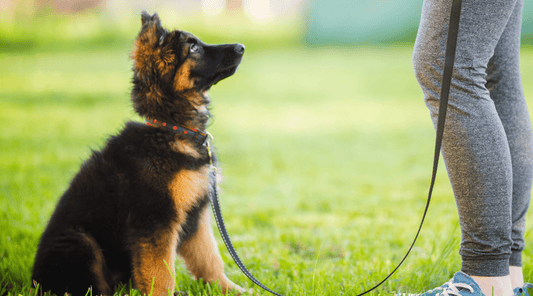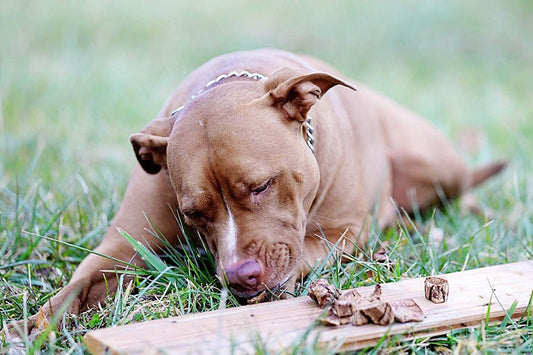
Why The Best Dog Chew Bones are Grass Fed: With a Catch
Dawn Miller Sep 02, 20245 Minute ReadSo, last weekend, I was strolling through our local farmer's market. As I filled one recycled cloth bag with in-season, locally-grown, organic produce and a separate bag with grass-fed ground beef, forest-raised pork, and pasture-raised chicken eggs, I thought about how fortunate I am to live in a community where I have access to nutritious and humanely-raised food and the means to buy it. I love supporting small family farms while the farmer's market is open, where I am.
Choosing healthier and more humane food options for my family has become a part of my identity. And that extends to my furry kids, the 3 energetic dogs who've taken the place of my human children since they left for college. My dogs deserve grass-fed beef dog bones, too!
Here's why:
Grass Fed Dog Bones Vs. Conventional
Not tiny differences.
Grass-fed dog bones come from pasture-raised cattle permitted to eat a nutritious, more natural diet, which also produces more natural dog bones. These cattle live free-range on ranches, not cooped up in barns or muddy pens for most of their lives. Grass-fed dog bones are the healthiest bones for dogs. They make the best dog chewing bones, especially for large dogs who are aggressive chewers like my lab mix.
Less of the Stuff You Don't Want
Grass-fed beef dog bones have fewer triglycerides, homocysteine, and advanced glycation end products. I don't know exactly what all of these are. However, I did learn that these are naturally occurring substances linked to poorer cardiovascular health in humans. The higher rate of these substances in conventional beef herds results from the less nutritious grain diet.
More Vitamins
On the vitamin front, grass-fed beef dog bones have 1.5X the vitamin C. I don't usually think of meat as a vitamin C source. But it can be when I choose grass-fed. And that's great because my dogs don't eat peppers and oranges like I do. Beyond nutrition, vitamin C is also a natural preservative, so it can make dog bones last longer.
Also, more B vitamins, including B12, which is important for mental health. Niacin (a B vitamin critical for skin, digestion, and nerve function) is a whopping 9X higher in grass-fed.
Less Saturated Fat; More Healthy Fat
Grass-fed marrow bones for dogs have less saturated fat. The saturated fat found in grass-fed beef is also of the long-chain variety. This type of saturated fat is "better" for health than the other kind.
I know. I didn't know there was such a thing, either.
Less saturated fat means more room for healthier polyunsaturated fats.
These are the essential fats that humans and dogs can't make in our bodies. We have to get it from our diets. In particular, grass-fed beef bones have more omega 3 and conjugated linoleic acid (an omega 6) with a better omega 6 to omega 3 ratio. That's important because while omega-6 IS a healthy fat, current evidence suggests too much omega-6 with too little omega-3 can increase inflammation.
Greater Bone Density
First, why is dog bone density important? It's simple. Lower bone density increases fracture risk in humans, dogs—and cows. That's bad for a dog bone because it's more likely to splinter, increasing the risk of choking and intestinal tract damage, which could require surgery.
Most all-natural dog bones on the market come from aged dairy cows. Not only are most dairy cows raised conventionally on a grain diet. They're also at the end of their "usefulness" to us humans anyway.
So, the rancher says, "this cow can't produce milk anymore, so let me see if I can make a little extra money off their bones."
I mean, it's smart, right? Waste not, want not.
But it's not great for the end consumer, my dogs. I probably don't have to tell you this. But older cows, just like older people (especially us ladies), lose bone mass as we get older. It's the natural progression of things. Osteoporosis isn't just a human thing. Dogs get it. Cows get it.
What I'm trying to say here is that the age at which a cow is slaughtered matters, too! Even if they're grass-fed, older cows have weaker bones.
So, before you run out and spend more on grass-fed bones, thinking they're automatically better, it's important to consider when they slaughter the animal. And that comes down to understanding the difference between cattle raised for meat and those raised for milk.
Beef Cattle Vs. Dairy Cattle
I didn't know this, so I asked the cattle rancher who sells me grass-fed beef every other week what the difference is. And then it all made sense.
Because dairy cows are prized for their milk, small-town farmers, who need to make a profit too, pay for their feed and upkeep for as long as they can produce milk. That's typically over 5-6 years. After that, they sell the dairy cow to someone who will sell you dog bones.
On the other hand, the ideal time to slaughter cattle for meat is 1-3 years. The meat is more tender, and the farmer gets to make the best living for their family.
If your grass-fed bones come from dairy cows, they come from older cows by default. A couple of years makes a big difference for a hard-working dairy cow whose typical lifespan is shorter than a dog's.
If your supplier doesn't say where the beef dog bones come from, then you're almost certainly buying dairy cow-sourced marrow bones for dogs. They're generally cheaper for a reason.
What I Look for in Grass-Fed Beef Dog Bones
I buy grass-fed beef marrow bones from a small company in the USA that sources beef dog bones from grass-fed cattle in the USA. I like to know where my food comes from. And I believe buying American-made can reduce the risk of those bones really coming from dairy cows or conventional cattle.
I also care about how the bones are prepared, because that impacts density too. Raw bones can be hard on a dog's teeth. But overcooked bones are even more dangerous because they become brittle. I only get bones from a family company I trust to prepare the bones safely using a slow and low-temperature cooking process. This kills the bacteria while retaining nutrition, bone density, and tasty meaty bits my dogs can't get enough of.
And I'll just mention that size matters with dog bones. If you have large dog but also have smaller dogs, make sure your large dog has bones that they can't easily swallow. Regardless of size, the bone should be too big for their mouth. So, I get bones for dogs up to 50 pounds for my medium-sized dogs, and then I get one for large dogs. These bones last 2 years in the package.
And then, once I give them to my dogs, I limit dog chew bone sessions to 15-20 minutes 2-3 times a week. I freeze the bone in between uses and can keep giving it back to them until the nutritious marrow is gone. Even after that, I sometimes refill them with free recipes from this marrow bone refill cookbook.Available On:





